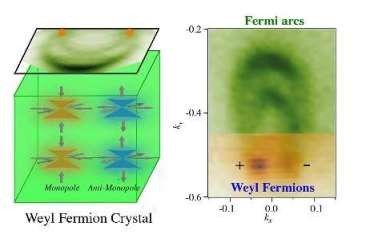The Institute of Physics of the Chinese Academy of Sciences has announced on Tuesday, July 21, that their scientists have isolated the Weyl fermion, a massless particle which could have potential use for faster and more efficient electronics, the Xinhua News Agency reported.
German physicist Hermann Weyl first proposed the existence of the particle in 1929, exactly 86 years ago. The particles, which came to be known as Weyl fermions, are more basic particles than electrons and, since they are massless, they can facilitate a more free and efficient flow of electricity.
Unlike electrons, Weyl fermions also possess a high degree of mobility and the particles spin both in the same direction as its motion--which is known as being right-handed--and in the opposite direction in which it moves, or left-handed.
But scientists had not seen or observed the particles in experiments before, the report said.
"The physics of the Weyl fermion are so strange, there could be many things that arise from this particle that we're just not capable of imagining now," Zahid Hasan, a professor at Princeton University, was quoted as saying by sci-news.com.
"The find differs from the other particle discoveries in that the Weyl fermion can be reproduced and potentially applied," Hasan added.
Scientists at the CAS Institute of Physics, however, had reportedly discovered a way to reproduce the particle by shooting synchrotron radiation light beams through a synthetic metallic crystal called tantalum arsenide (TaAs).
The report said that the discovery of Weyl fermions may help reduce the energy consumption of smaller electronic devices. The particle may also be used to achieve high fault tolerance in topological quantum computing.



























